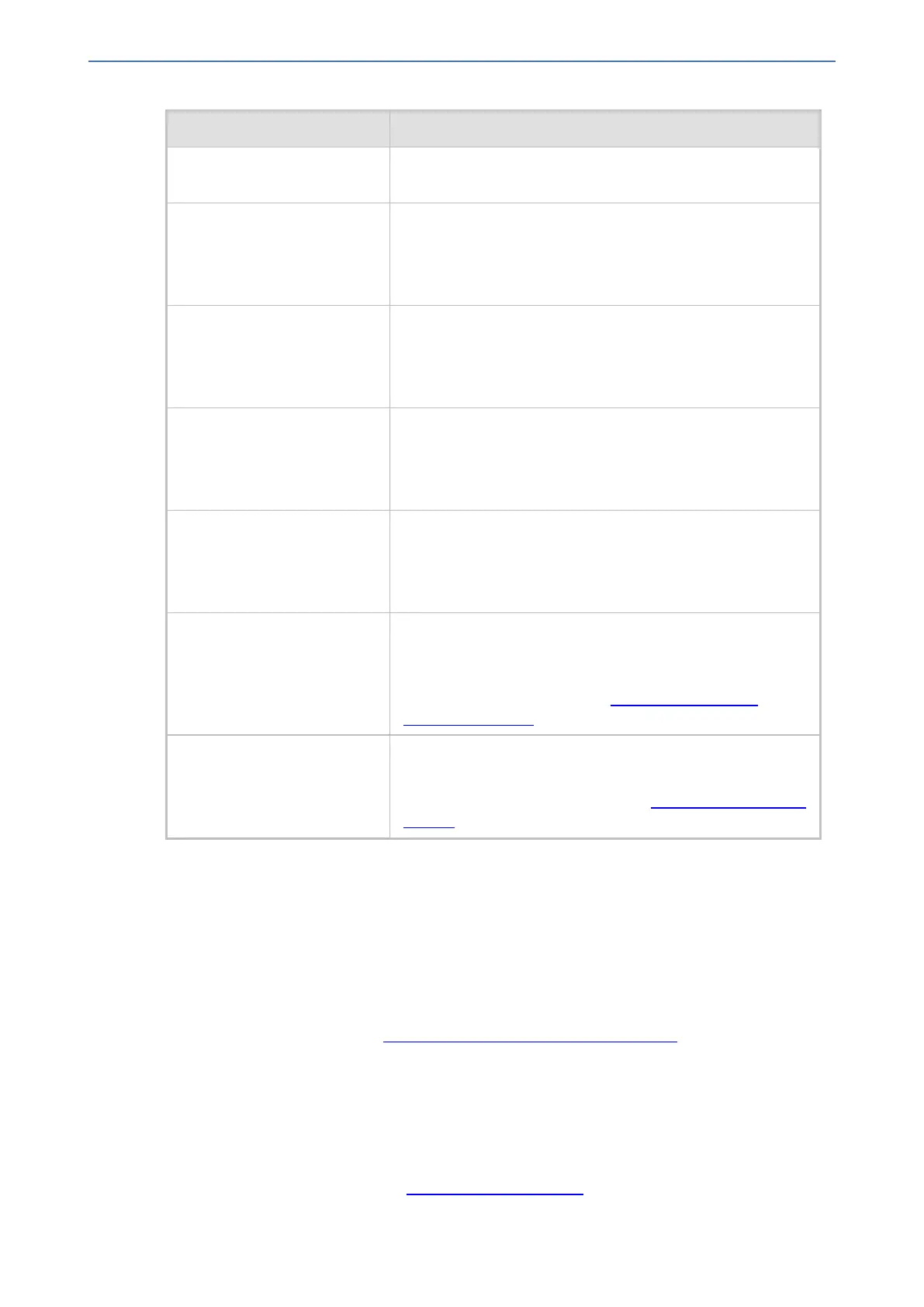CHAPTER18 Core Entities
Mediant 1000 Gateway & E-SBC | User's Manual
Parameter Description
[RemoteMediaSubnet_
RemoteMediaSubnetIndex]
Note: Each row must be configured with a unique index.
'Name'
name
[RemoteMediaSubnet_
RemoteMediaSubnetName]
Defines a descriptive name, which is used when associating
the row in other tables.
The valid value is a string of up to 20 characters.
Note: Each row must be configured with a unique name.
'Prefix Length'
prefix-length
[RemoteMediaSubnet_
PrefixLength]
Defines the subnet mask in Classless Inter-Domain Routing
(CIDR) notation. For example, 16 denotes 255.255.0.0.
The default is 16.
'Address Family'
address-family
[RemoteMediaSubnet_
AddressFamily]
Defines the IP address protocol.
■ [2] IPv4 (default)
■ [10] IPv6
'Destination IP'
dst-ip-address
[RemoteMediaSubnet_
DstIPAddress]
Defines the IP address of the destination.
The default is 0.0.0.0.
'QoE Profile'
qoe-profile
[RemoteMediaSubnet_
QOEProfileName]
Assigns a Quality of Experience Profile to the Remote Media
Subnet.
By default, no value is defined.
To configure QoE Profiles, see Configuring Quality of
Experience Profiles.
'BW Profile'
bw-profile
[RemoteMediaSubnet_
BWProfileName]
Assigns a Bandwidth Profile to the Remote Media Subnet.
By default, no value is defined.
To configure Bandwidth Profiles, see Configuring Bandwidth
Profiles.
Configuring SRDs
The SRDs table lets you configure up to 20 signaling routing domains (SRD). The SRD is a logical
representation of an entire SIP-based VoIP network (Layer 5) consisting of groups of SIP users and
servers. The SRD is associated with all the configuration entities (e.g., SIP Interfaces and IP
Groups) required for routing calls within the network. Typically, only a single SRD is required
(recommended) for most deployments. Multiple SRDs are only required for multi- tenant
deployments, where the physical device is "split" into multiple logical devices. For more information
on multi-tenant architecture, see Multiple SRDs for Multi-tenant Deployments.
As the device is shipped with a default SRD ("DefaultSRD" at Index 0), if your deployment requires
only one SRD, you can use the default SRD instead of creating a new one. When only one SRD is
employed and you create other related configuration entities (e.g., SIP Interfaces), the default SRD
is automatically assigned to the new configuration entity. Therefore, when employing a single-SRD
configuration topology, there is no need to handle SRD configuration (i.e., transparent).
You can assign SRDs to the following configuration entities:
■ SIP Interface (mandatory) - see Configuring SIP Interfaces
- 320 -

